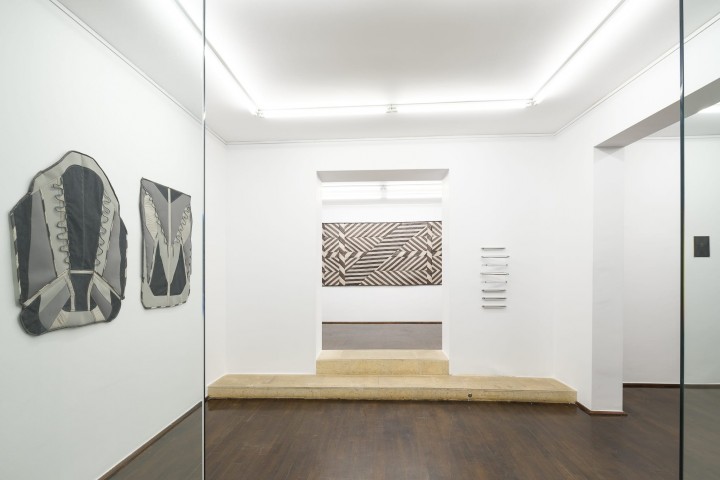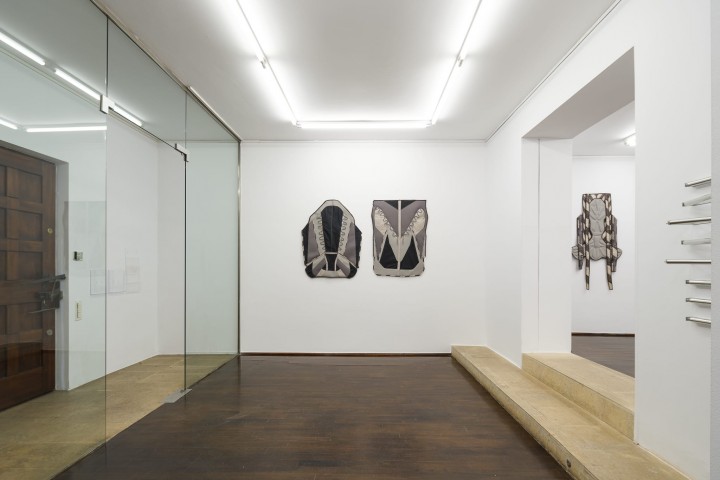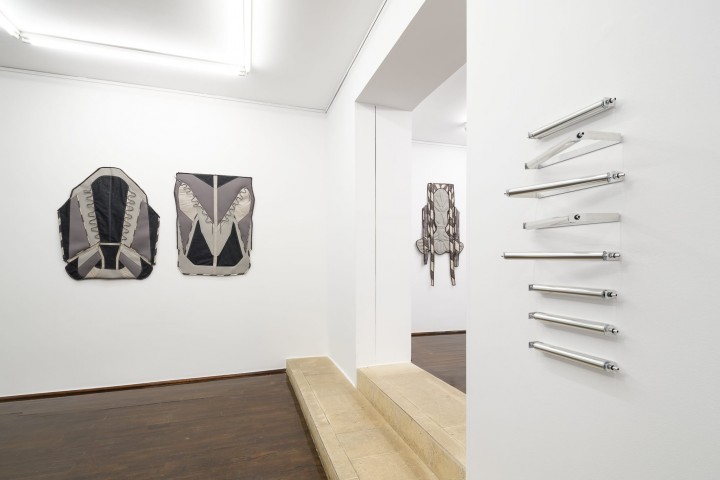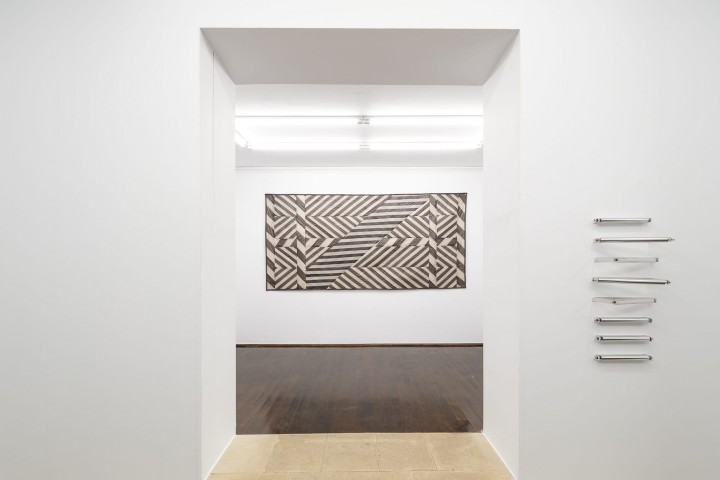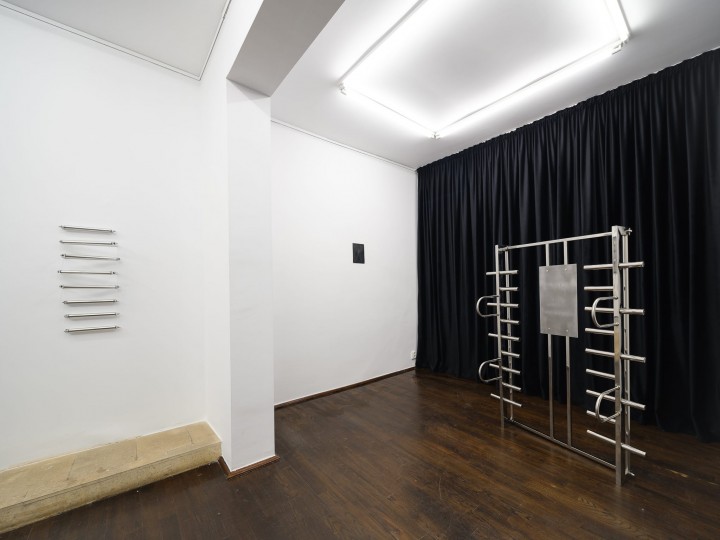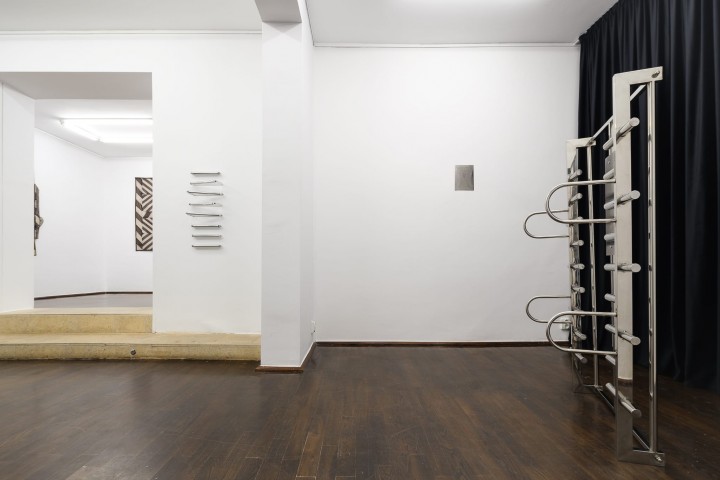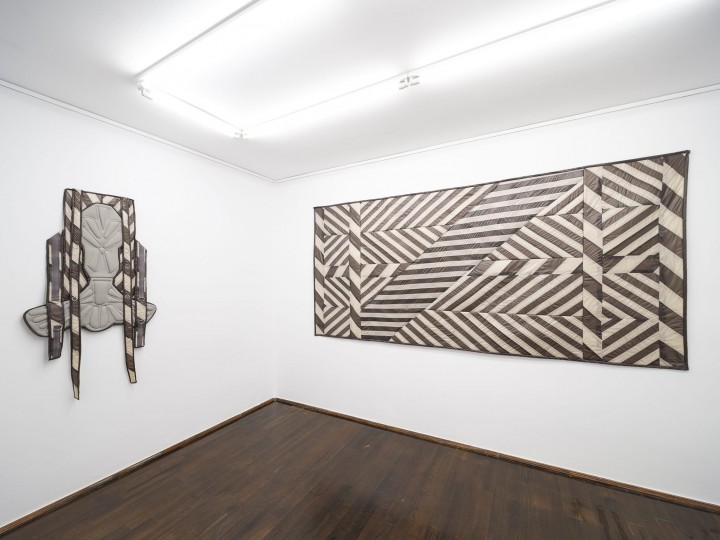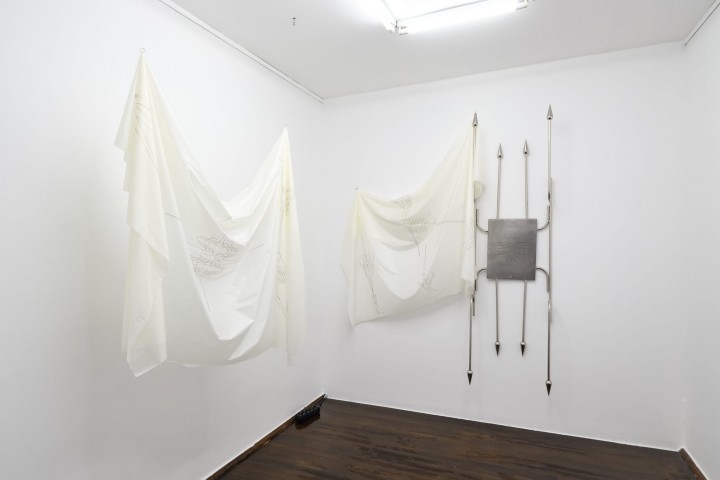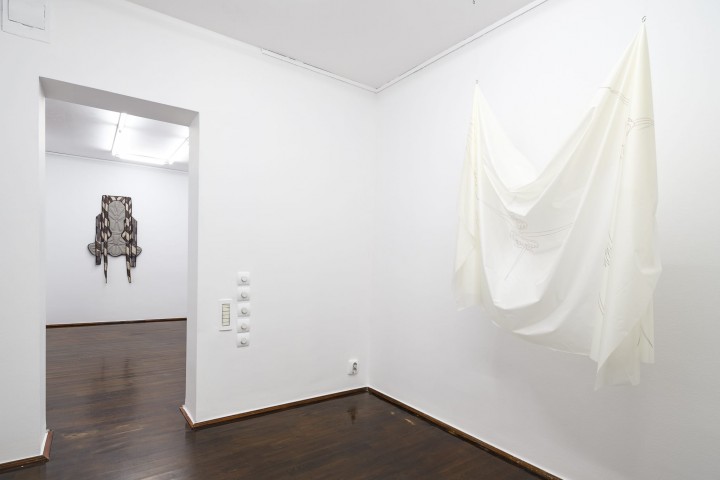I close the fabric shop earlier these days,
and head for the gym, smelling like clothing softener and acetate.
At this hour there’s usually no one to watch me concentrate on pumping up.
All I want is just some muscles for myself. [1]
Do you have a specific goal in mind? Are you fit for it? In the current fervor of ever elevated workouts and gym as an everyday-retreat, to sweat out has become something of a coping habit, a means for betterment and ease of mind. Yet, in these tonifying routines and expectations, of keeping track, self-monitoring and discipline, there’s something else that transpires: an obsession with transforming and optimizing the body. In our culture, everything has to perform, and so, what is deemed successful is how much work a body represents, how it expresses itself as resource and efficiency.
cable overhead triceps extension
close grip bench press
seated triceps press
seated calf raise
standing biceps cable curls
each in sets of five: reps, rest, reps
protein powder intake every hour
all I want is just some muscles for myself
Joseph Pilates – whose name the physical exercises take – proposed Contrology as a universal principle of rehabilitation of the body against the modern era’s ennui and exhaustion. Like today, it aligned the body and the mental state by re-learning movement and breathing, and building endurance. But did so through a fascinating use of various apparatuses, which seemingly facilitate proper body mechanics to enhance its functionality. Restoring the body meant restoring its productive use, better fit for a fast-paced system.[2]
This week’s training stretches the fascia, that soft connective tissue that surrounds muscles, and organs, and bones. Spread across the body it holds its structural integrity together. Healthy fascia is smooth, slippery and flexible, delivering minerals, amino-acids, and oxygen. Muscle growth can be easily observed.
Sword Swallowing Acrobat delves into the possibilities of optimization and automation of the body, and the seductive ideologies sewn in these desires for change. Giulia Crețulescu continues her interest in the ergonomics of adaptation and a fascination for technical drawing. Soft cushions, hard articulations and fluid plates, tapestries born out of industrial signaling or cylinders of the production line – show off the engineering principle of utmost efficiency ingrained in the objects’ original mundane design. Yet, they also speak of the body, hinting at an alchemical transfer of properties, in a correspondence between human and non-human agents. Of becoming body, and becoming machinic, of being worked out. Beyond the normative use, they appear as objects of fetish and totemic reverence.
As I prep to start my routine, Madonna’s voice reaches through the speakers – I do yoga and Pilates and the room is full of hotties, so I’m checking up the bodies, and you know I’m satisfied…[3] But at this hour, thankfully, there’s no one to check the bodies, to see me pumping up. All I want is just some muscles for myself.
In the world of fitness, it is the bodybuilder’s body who is not a body worked up for work, its muscles exist purely for aesthetic value. This as well is a body out of norm, totemic, to be revered. Posing with their netted tissues and flexing their many articulations, slick surfaces shining their forms, the assemblages Giulia Crețulescu has enmeshed, call upon to admire their physique and otherworldly canon of existence.
I strike a pose and I look at how beautiful my deltoid muscles have shaped.
And yes, I’m satisfied.
Text by Edith Lázár.
[1] The insert notes were inspired by Yuki Motoya’s story The Lonesome Bodybuilder (stories collection), transl.Asa Yoneda, Soft Skull, 2018
[2] Ibiayi Briggs – Body Culture and Contrology, e-flux Architecture, (Sick Architecture), June 2022
[3] Madonna, American Life, 2003
Photo credits: YAP Studio / Mădălin Mărgăritescu
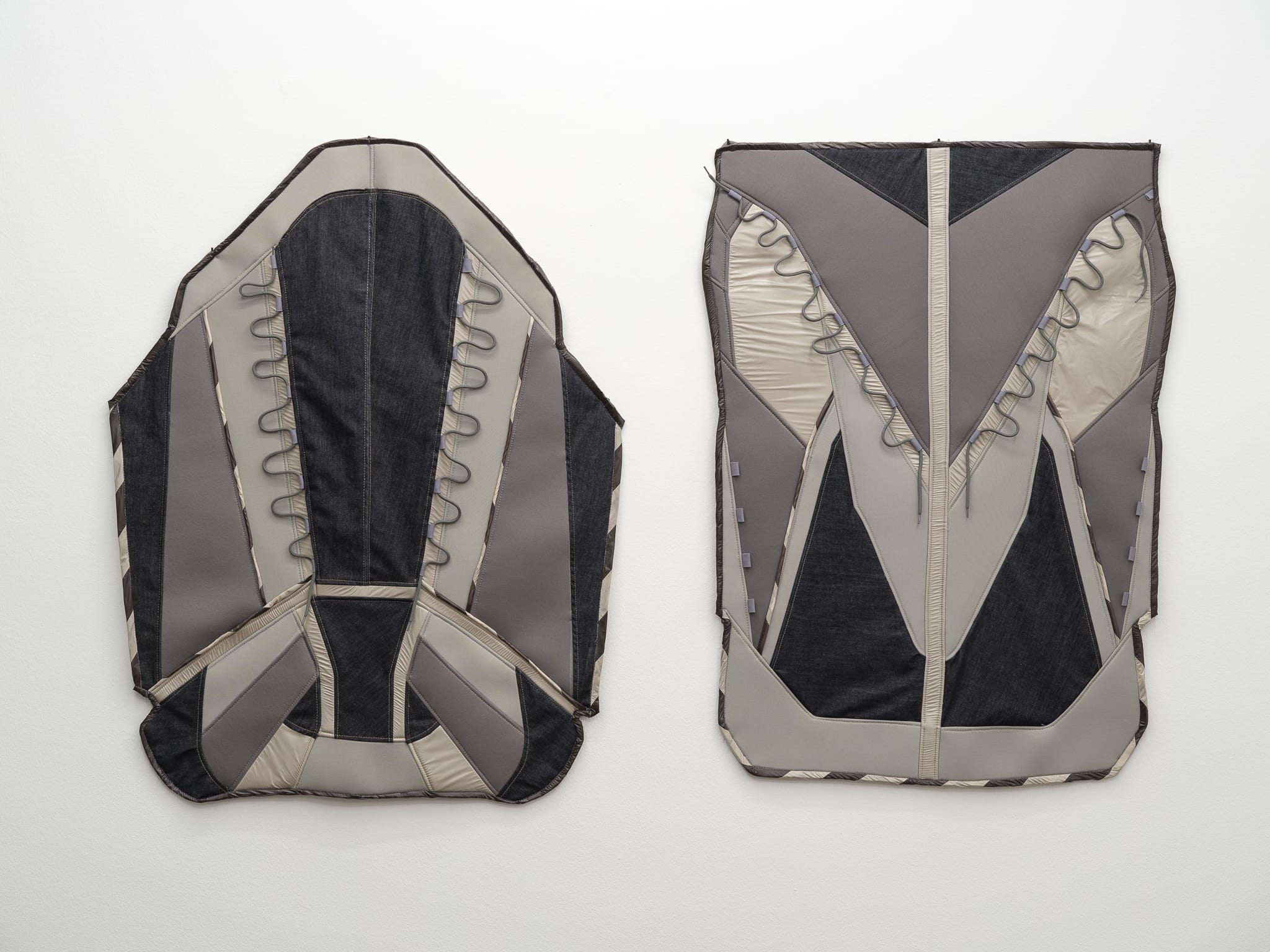
textile, sponge
100 x 70
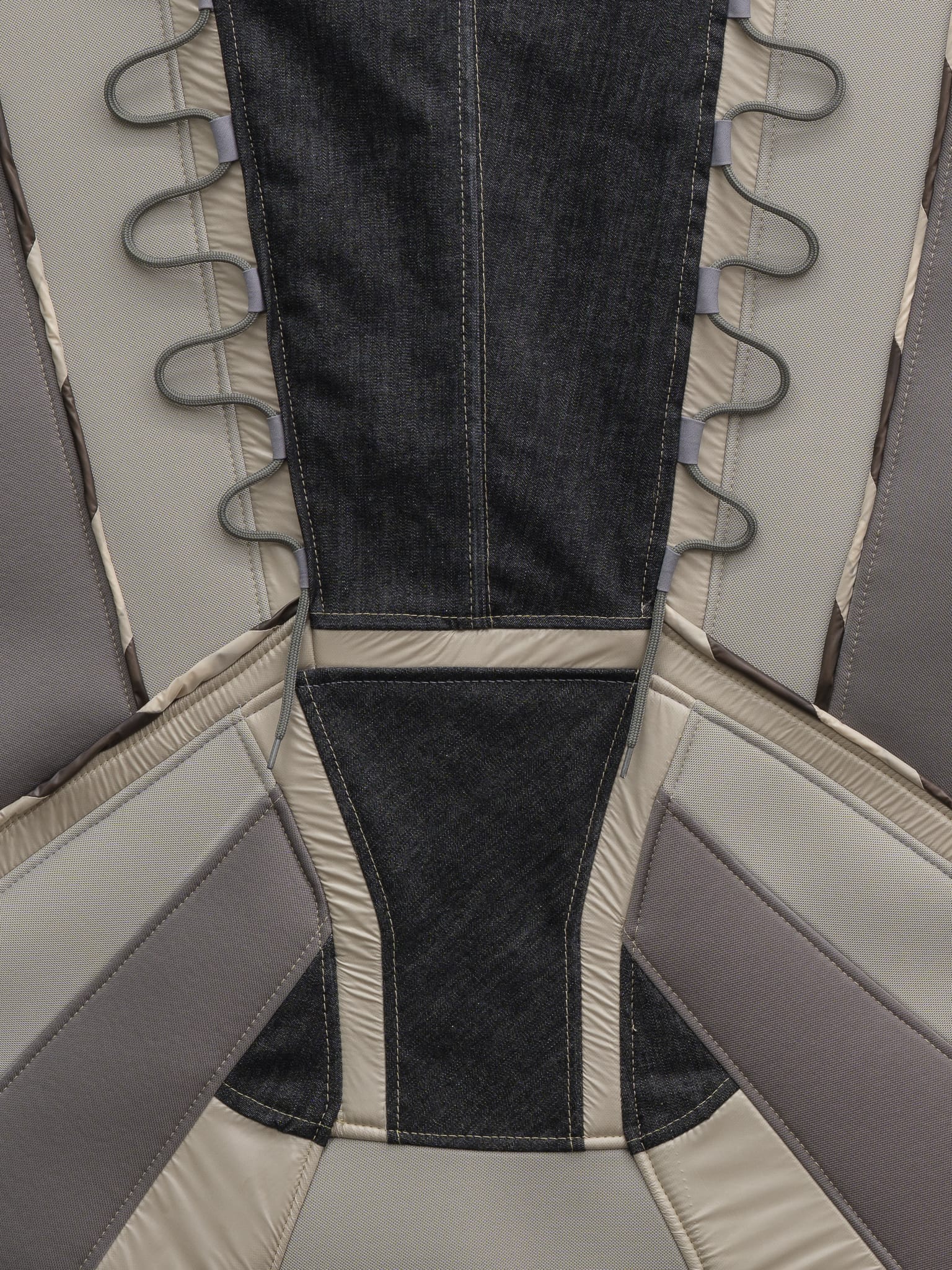
textile, sponge
100 x 70
(details)
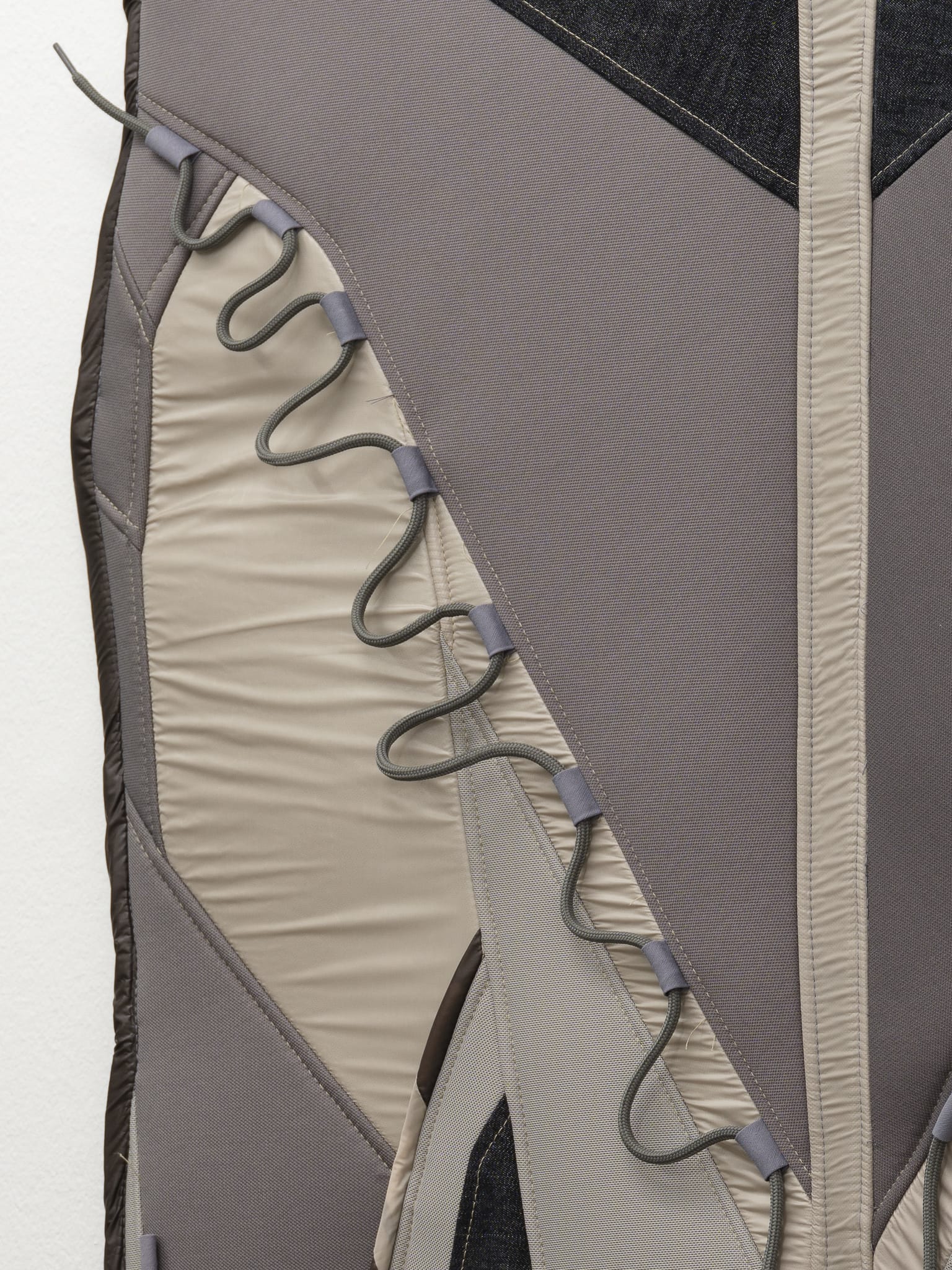
textile, sponge
100 x 70
(details)
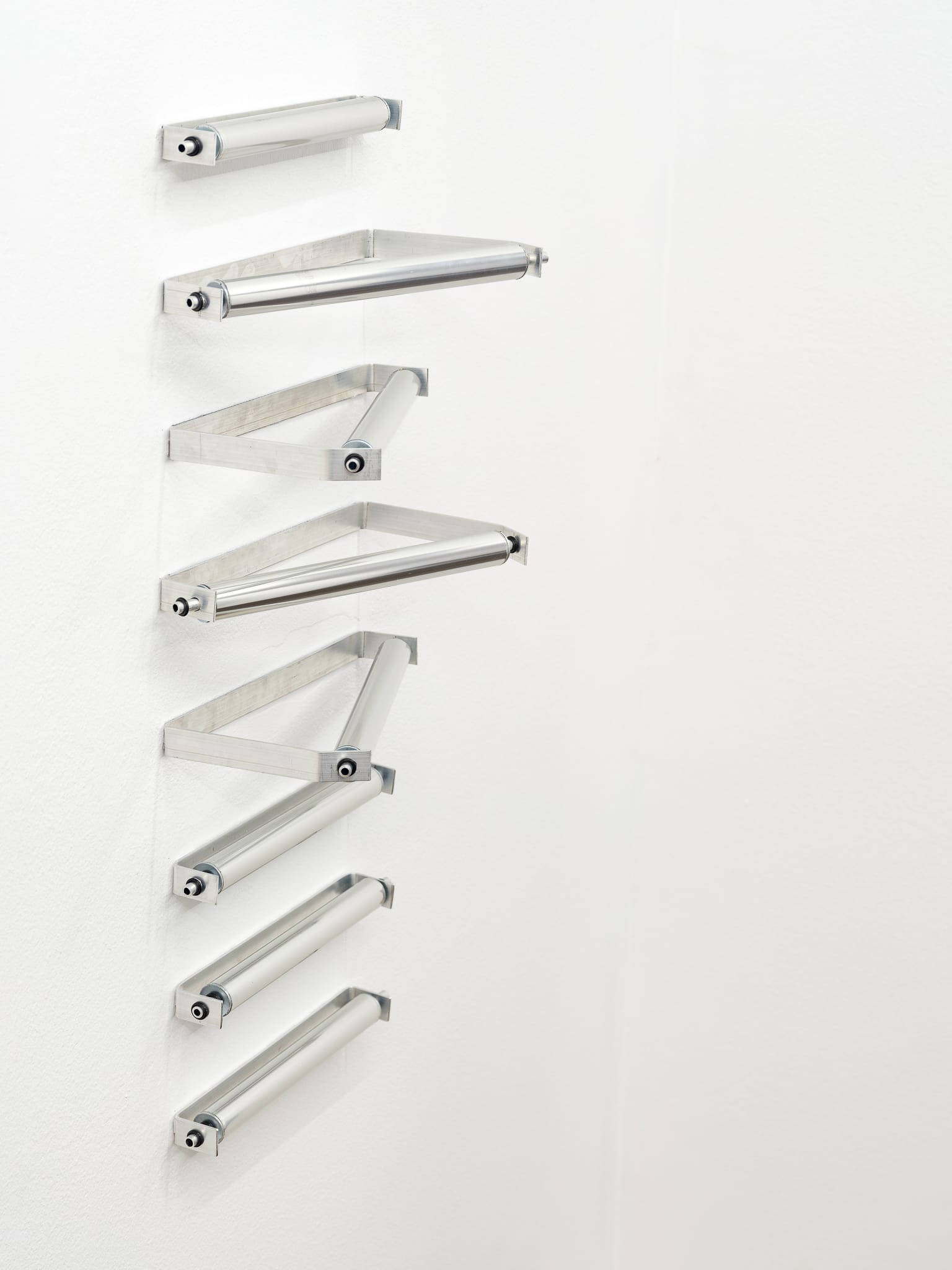
aluminum, rubber gaskets
25 x 3 cm each
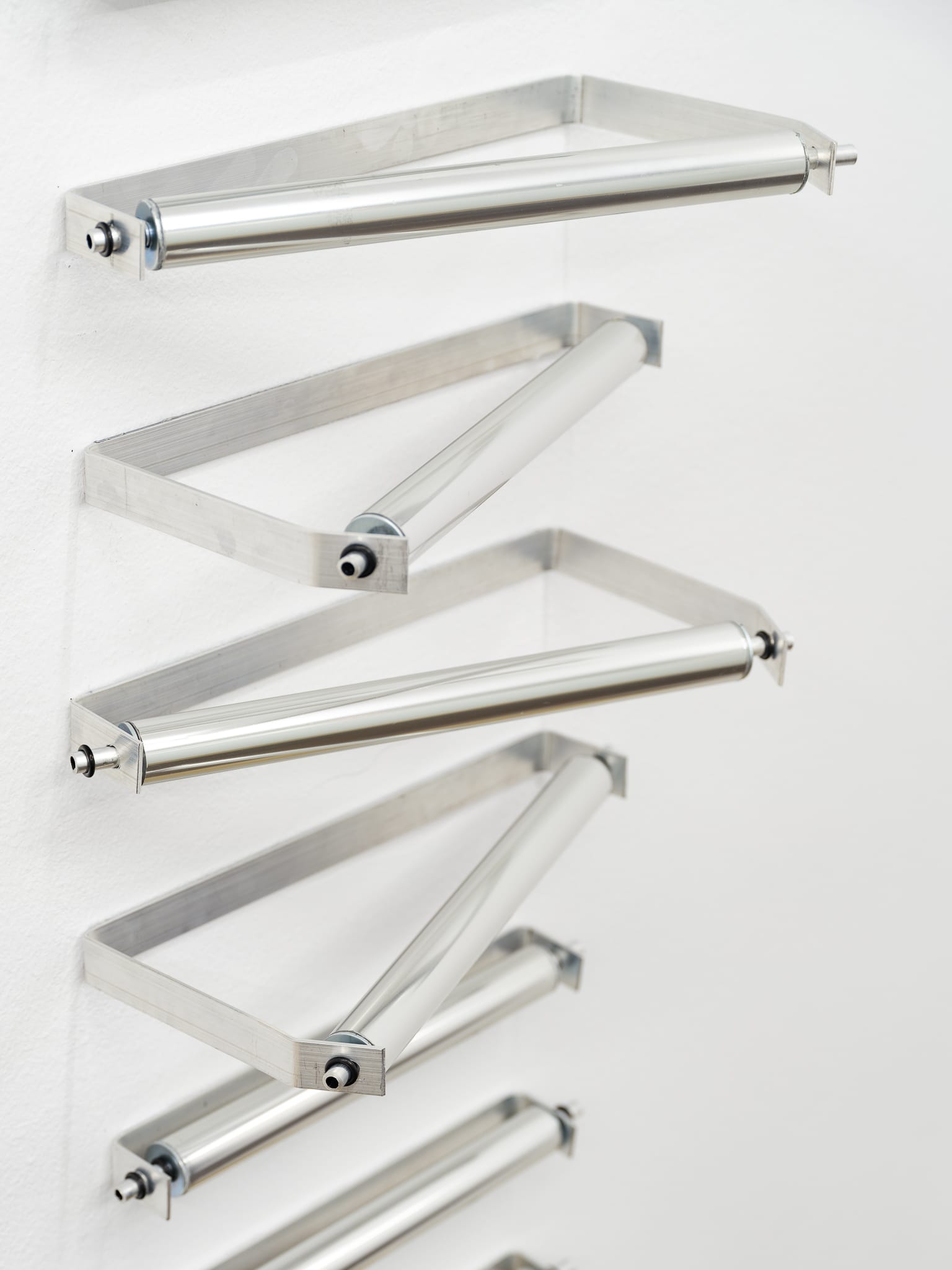
aluminum, rubber gaskets
25 x 3 cm each
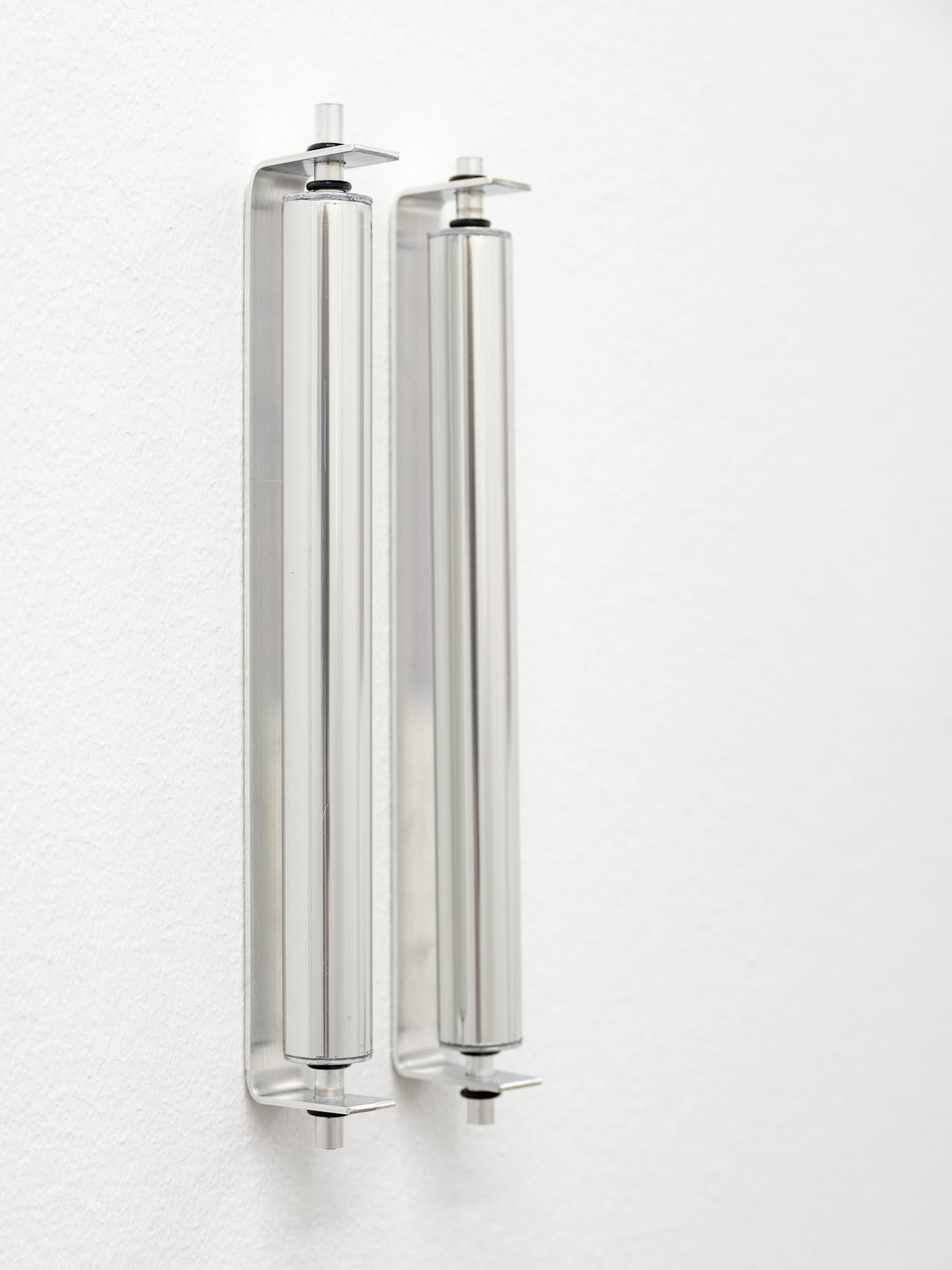
aluminum, rubber gaskets
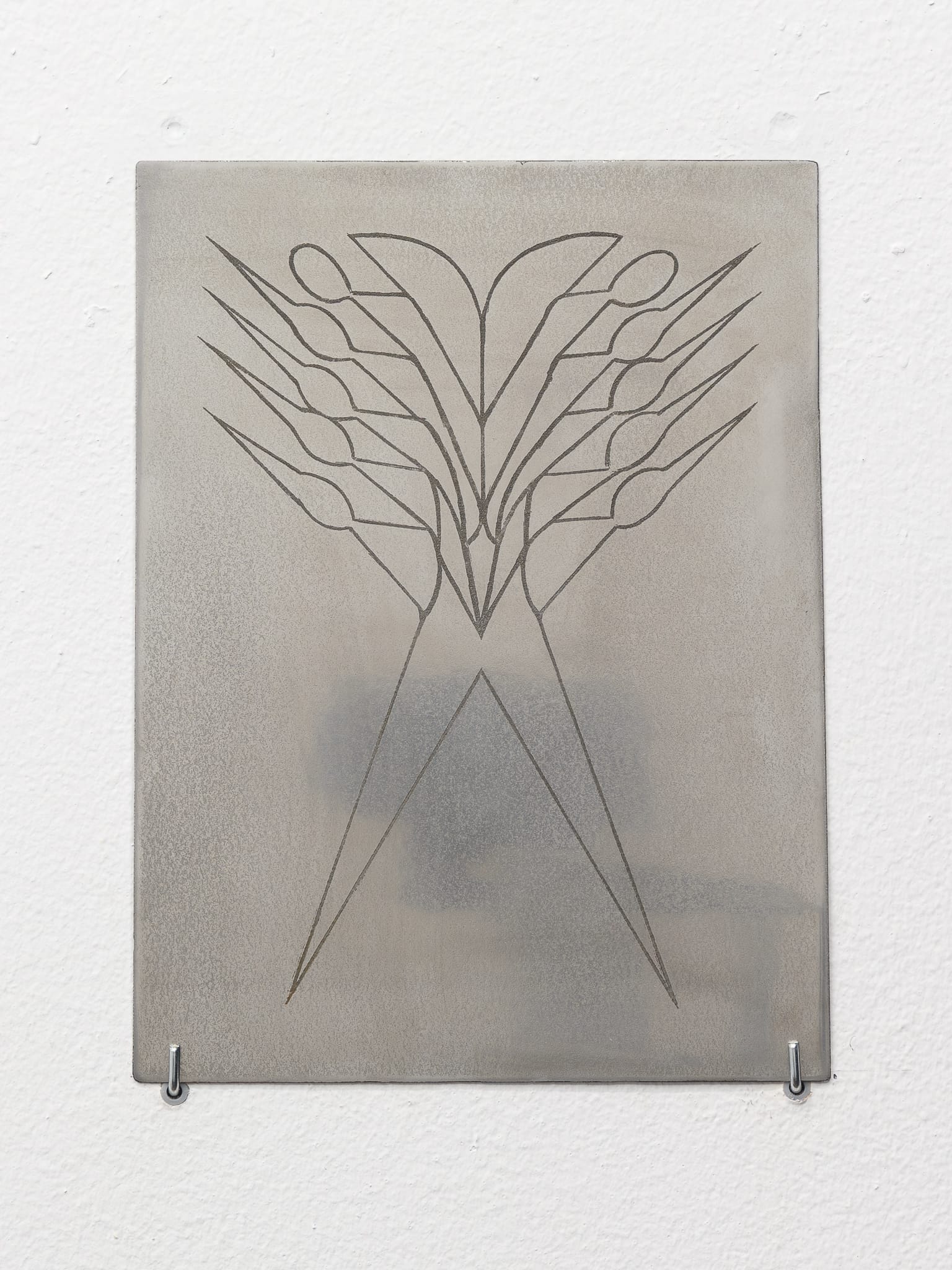
engraving plate
24 x 18 cm
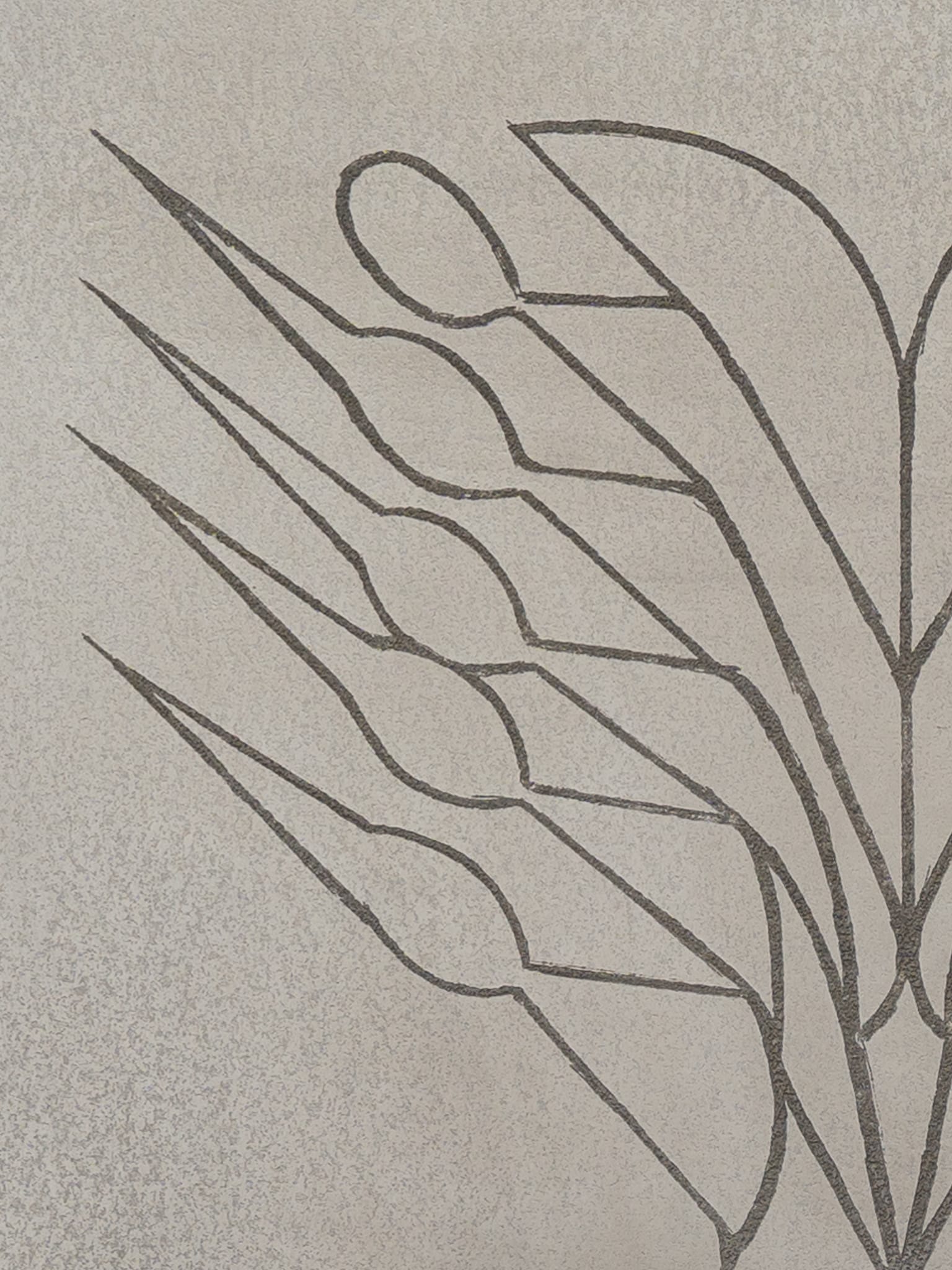
engraving plate
24 x 18 cm
(details)
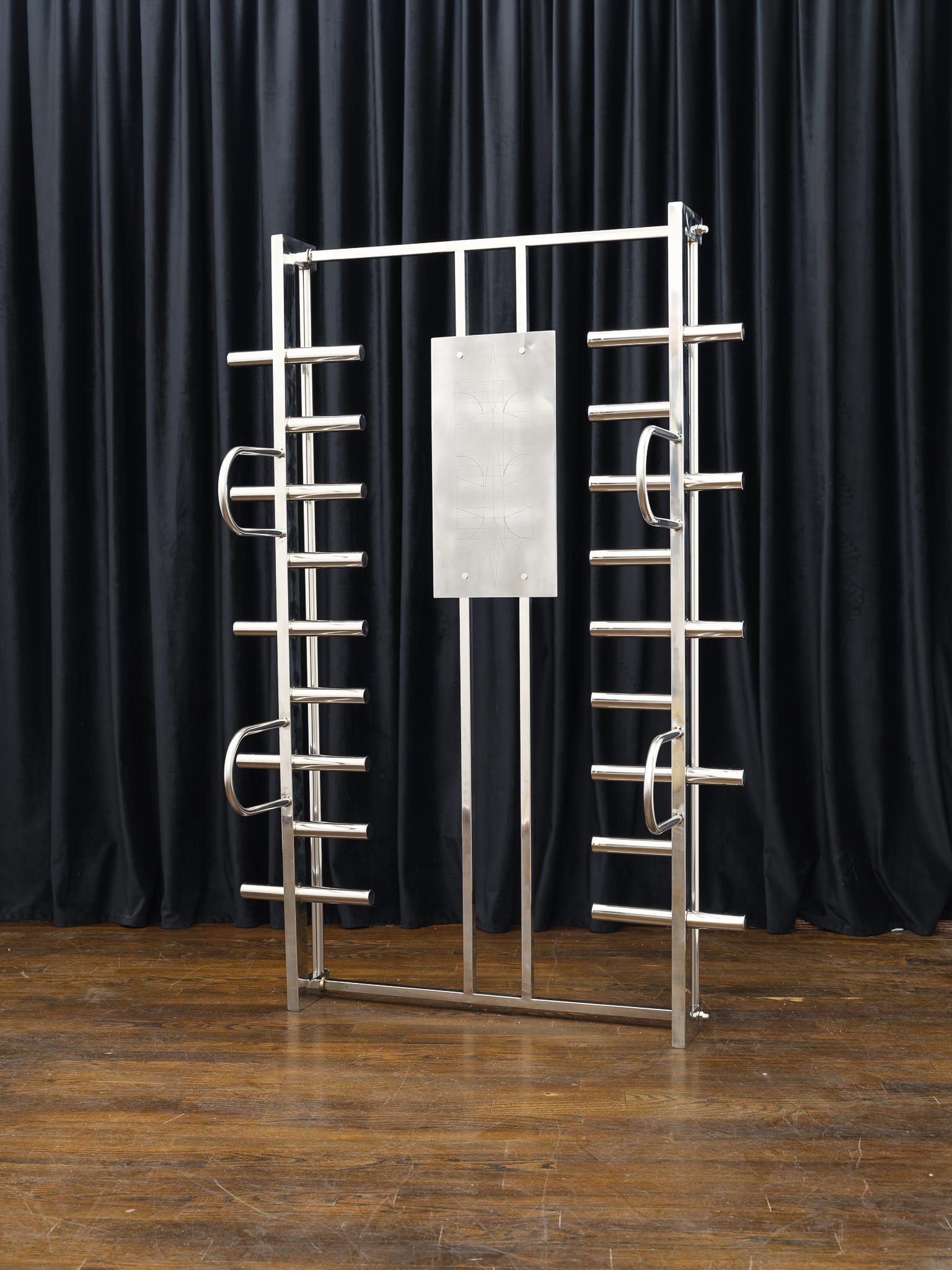
stainless steel
150 x 80 x 30 cm
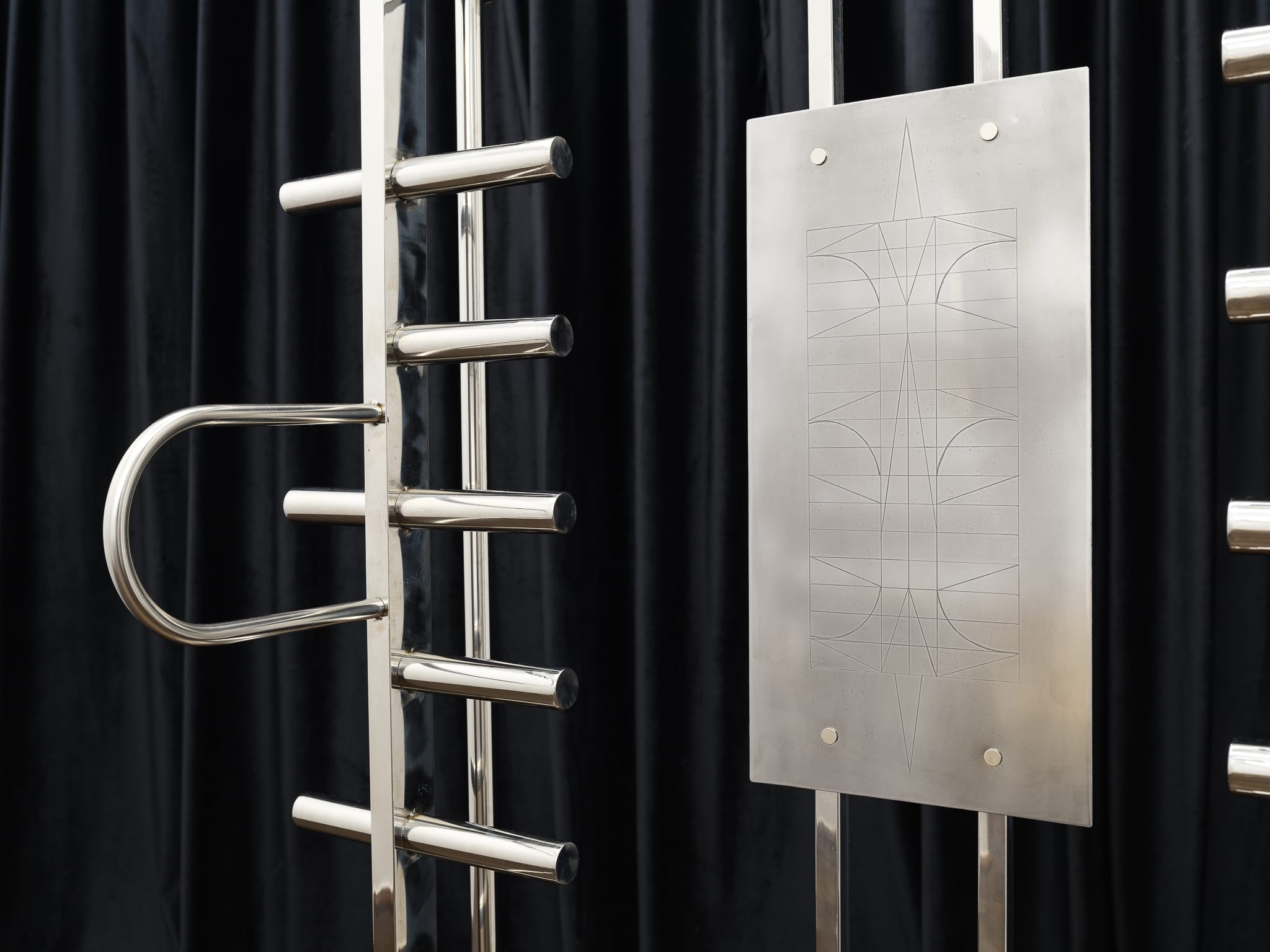
stainless steel
150 x 80 x 30 cm
(details)
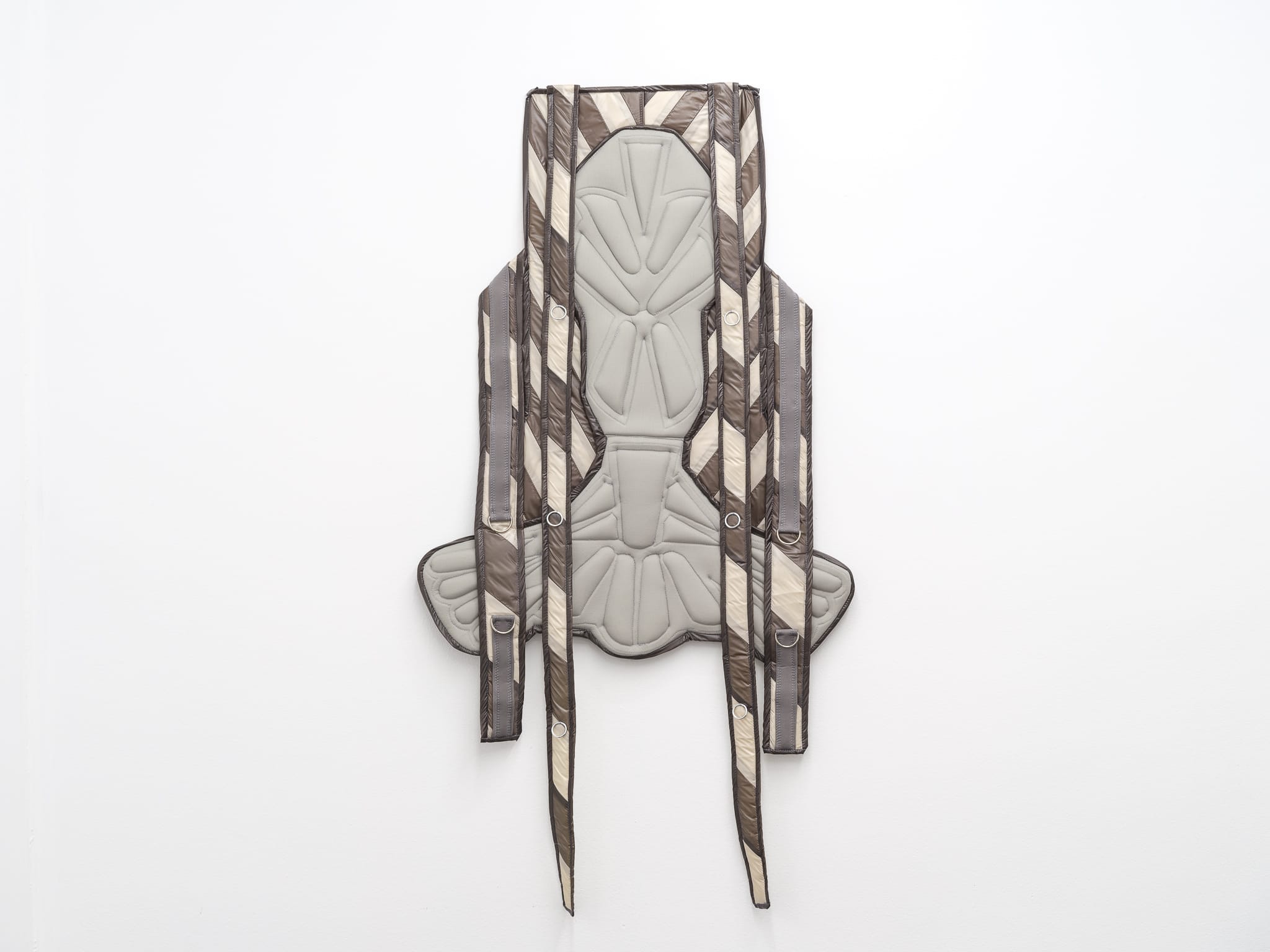
textile, sponge
130 x 80 cm
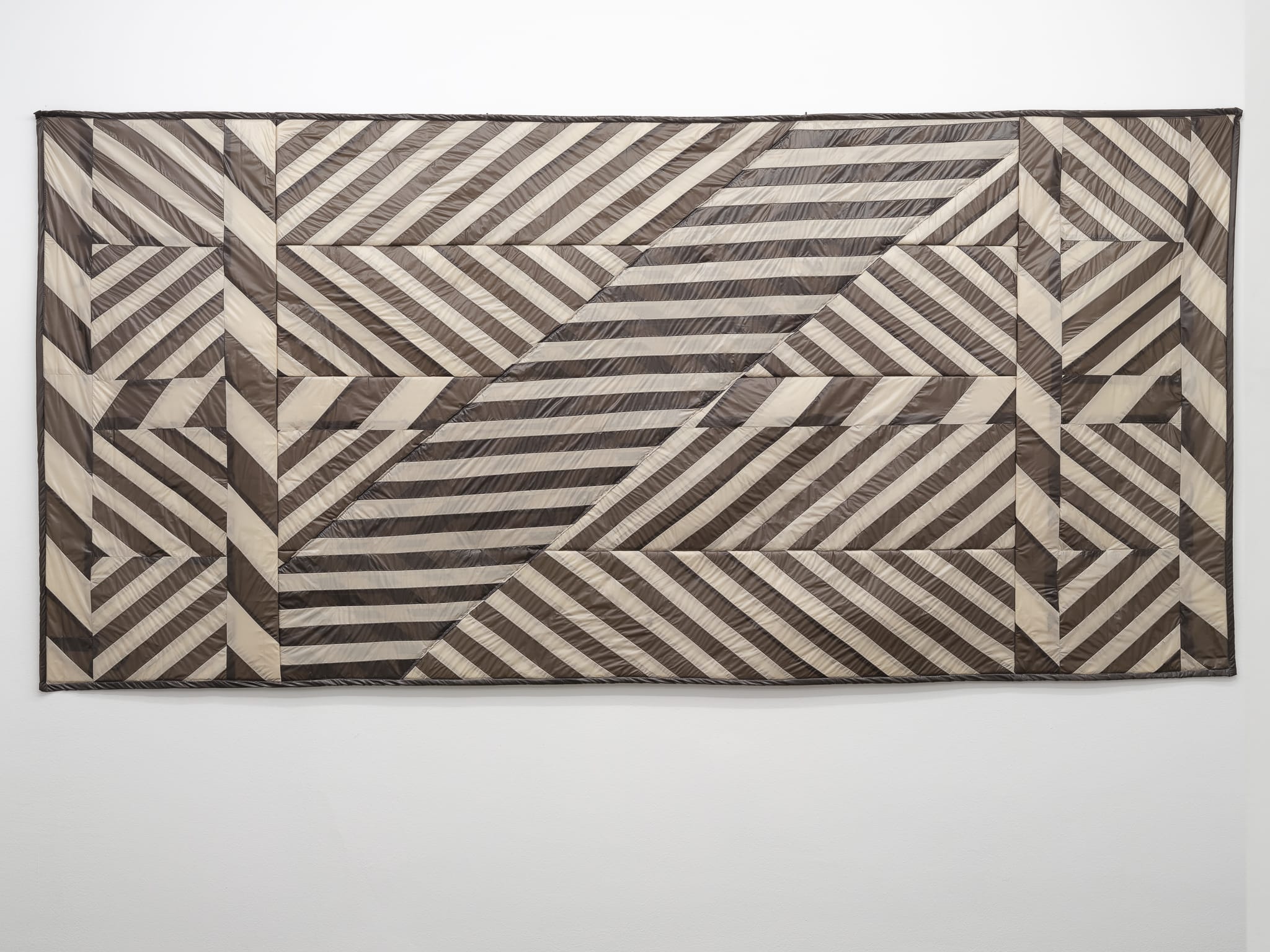
textile, sponge
270 x 130 cm
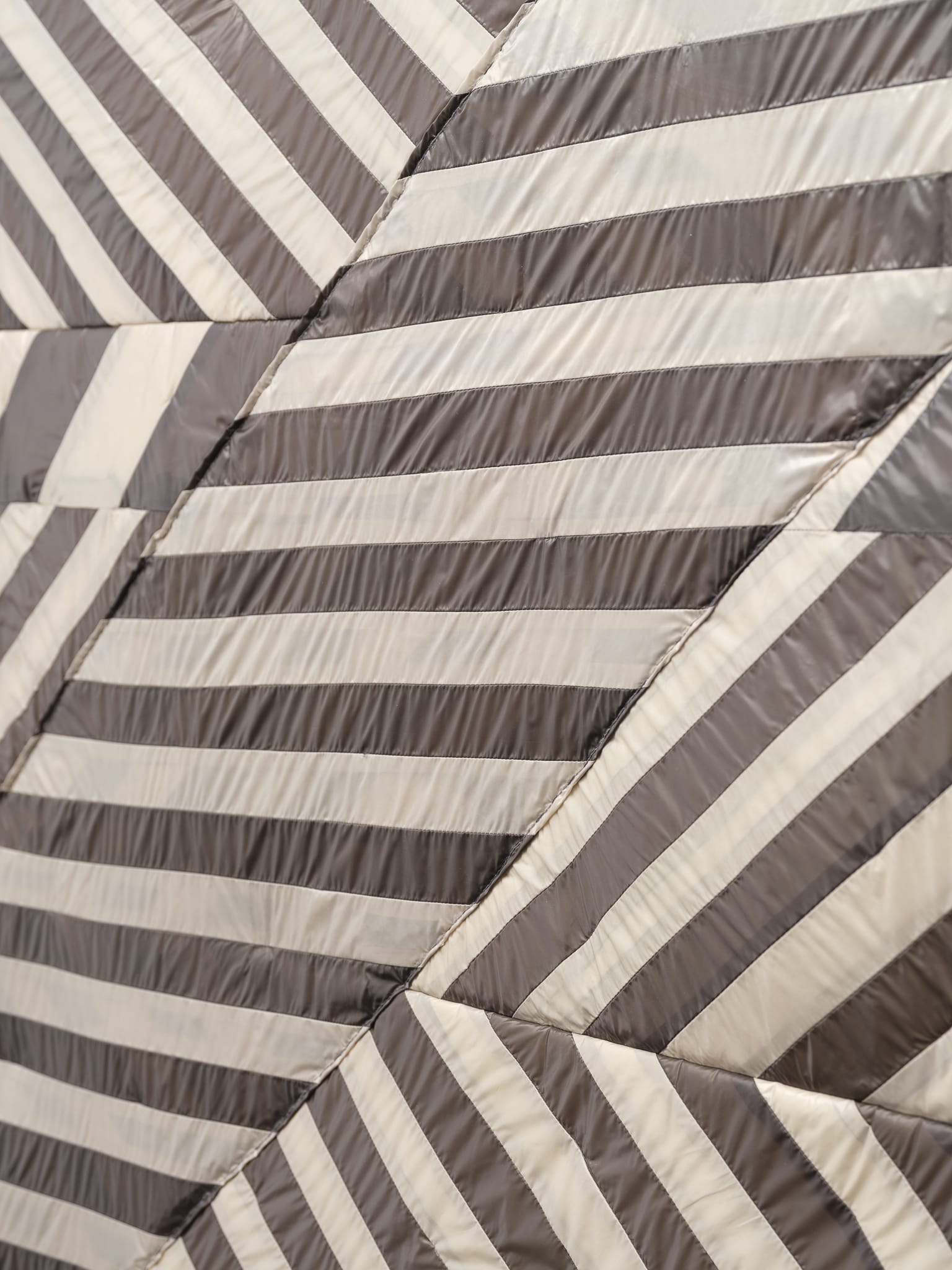
textile, sponge
270 x 130 cm
(details)
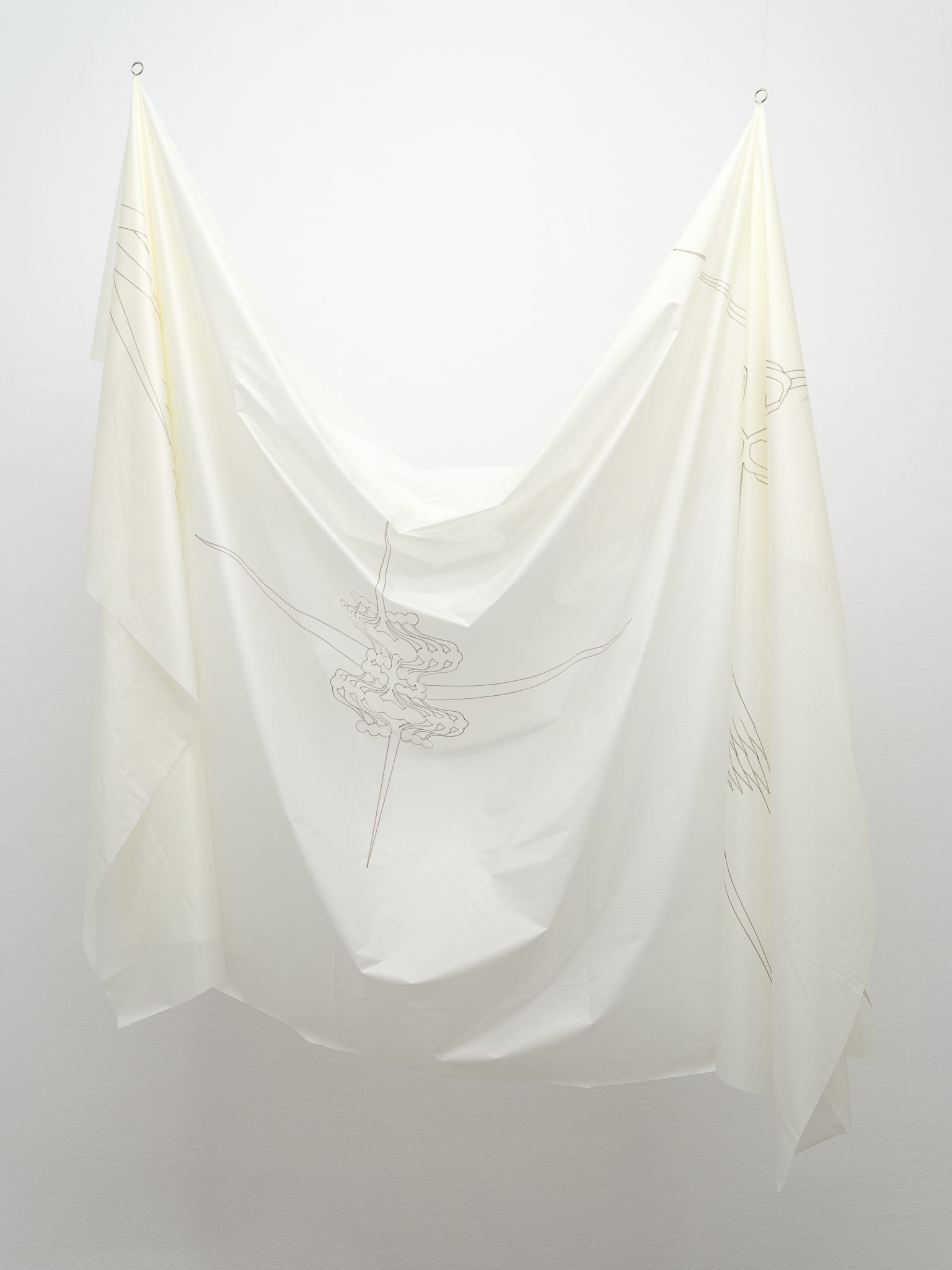
textile
160 x 130 cm
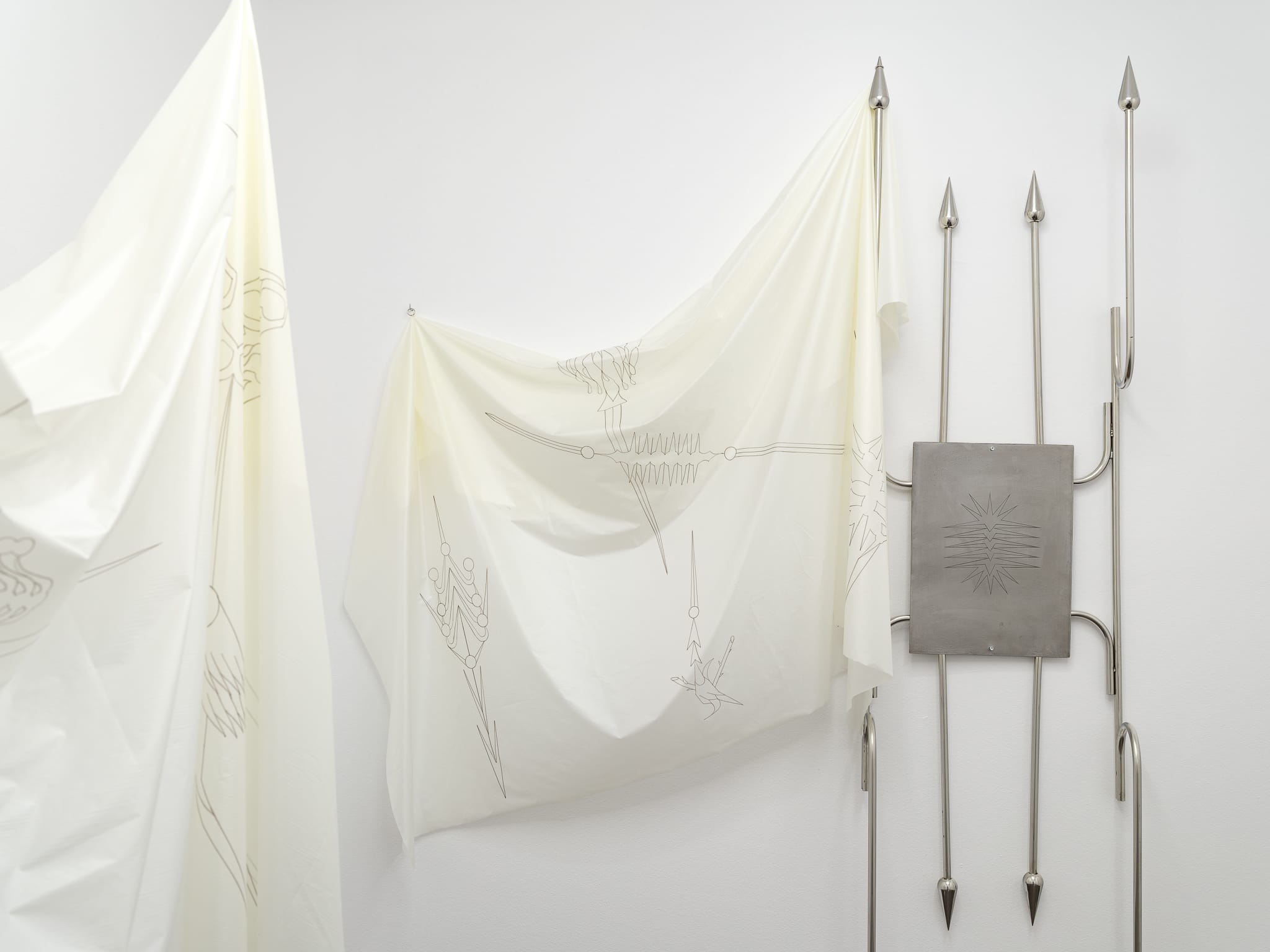
textile
160 x 130 cm
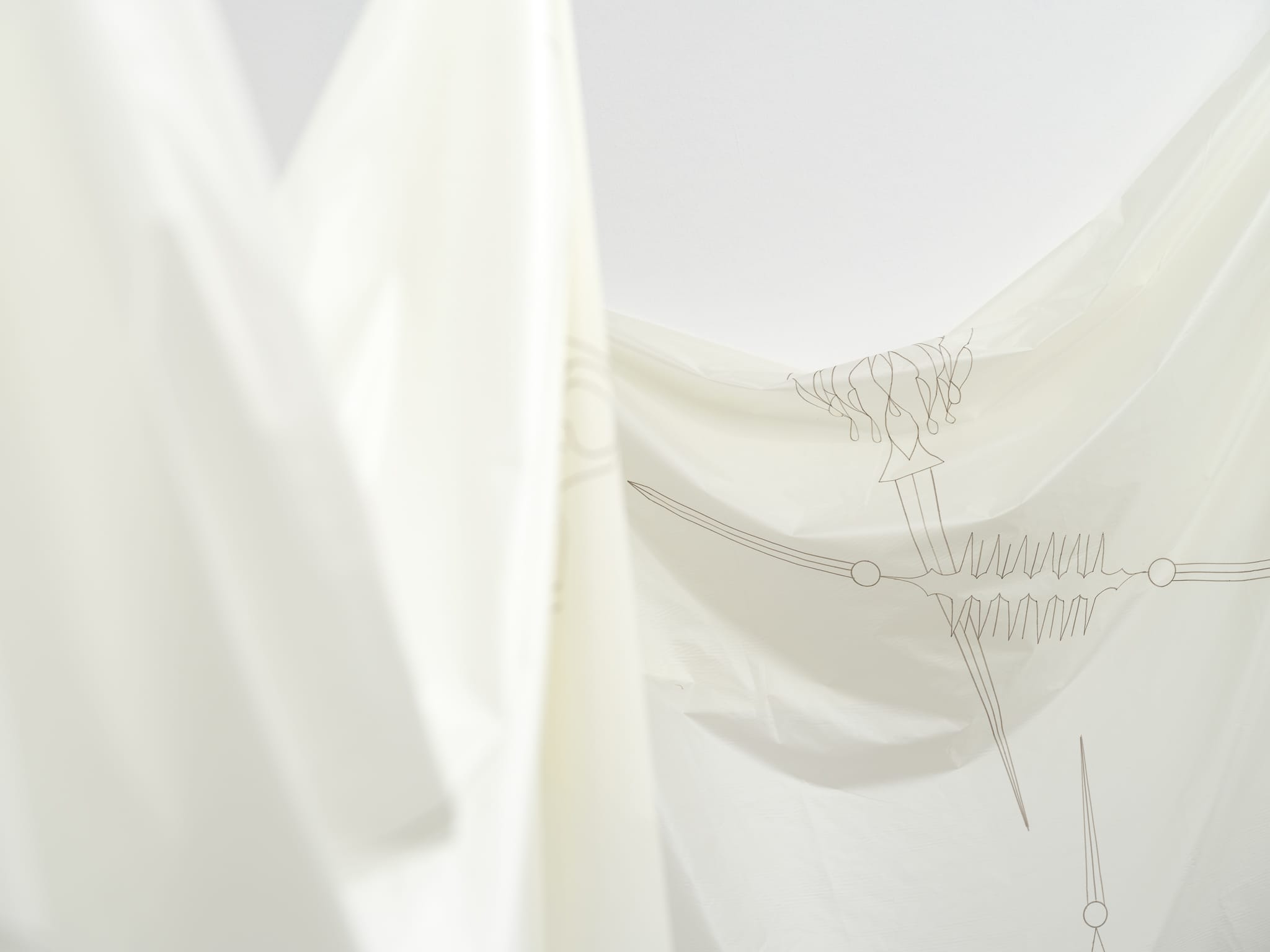
textile
160 x 130 cm
(details)
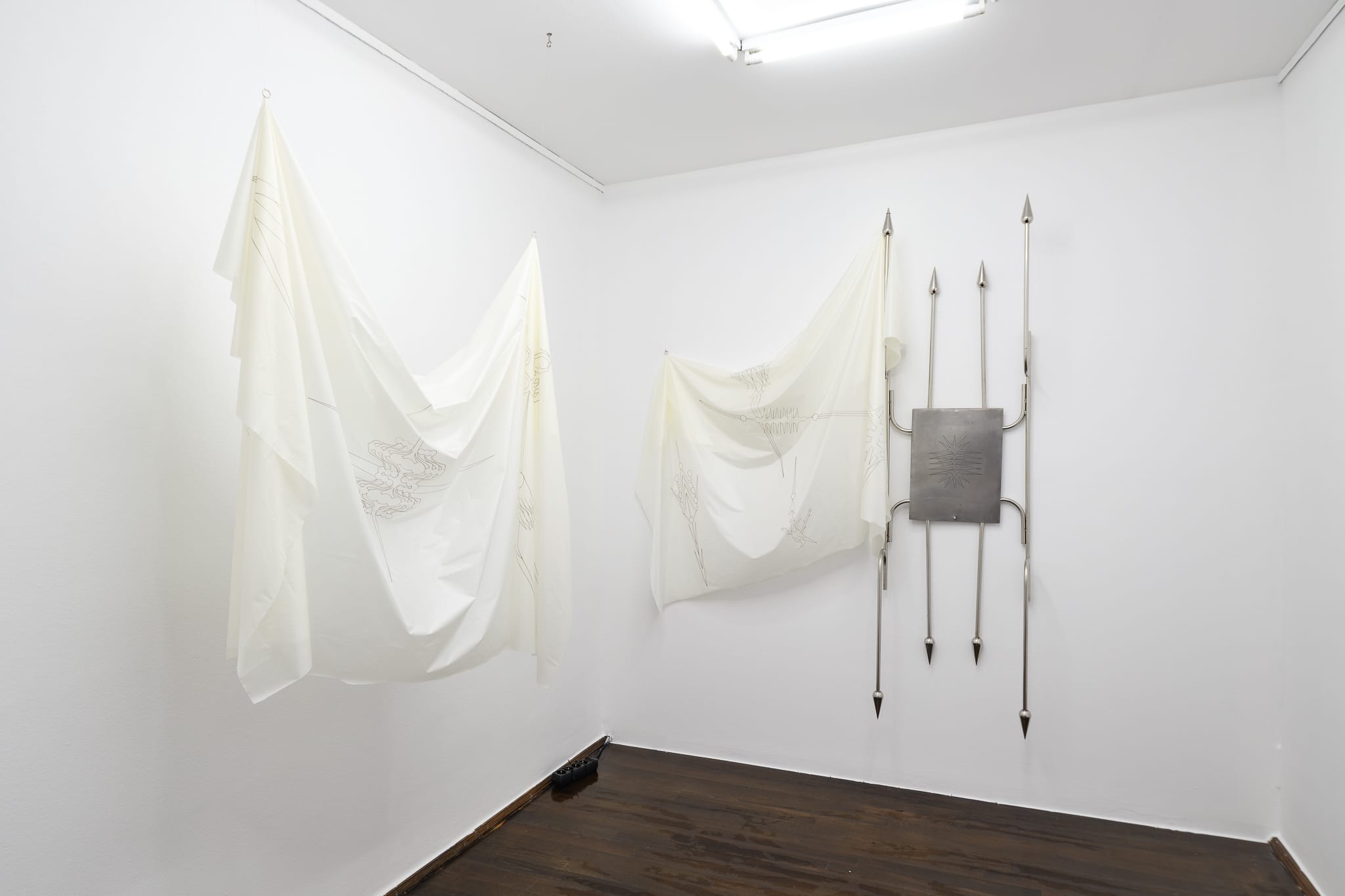
mirror drawing, engraving plate, stainless steel
170 x 80 cm
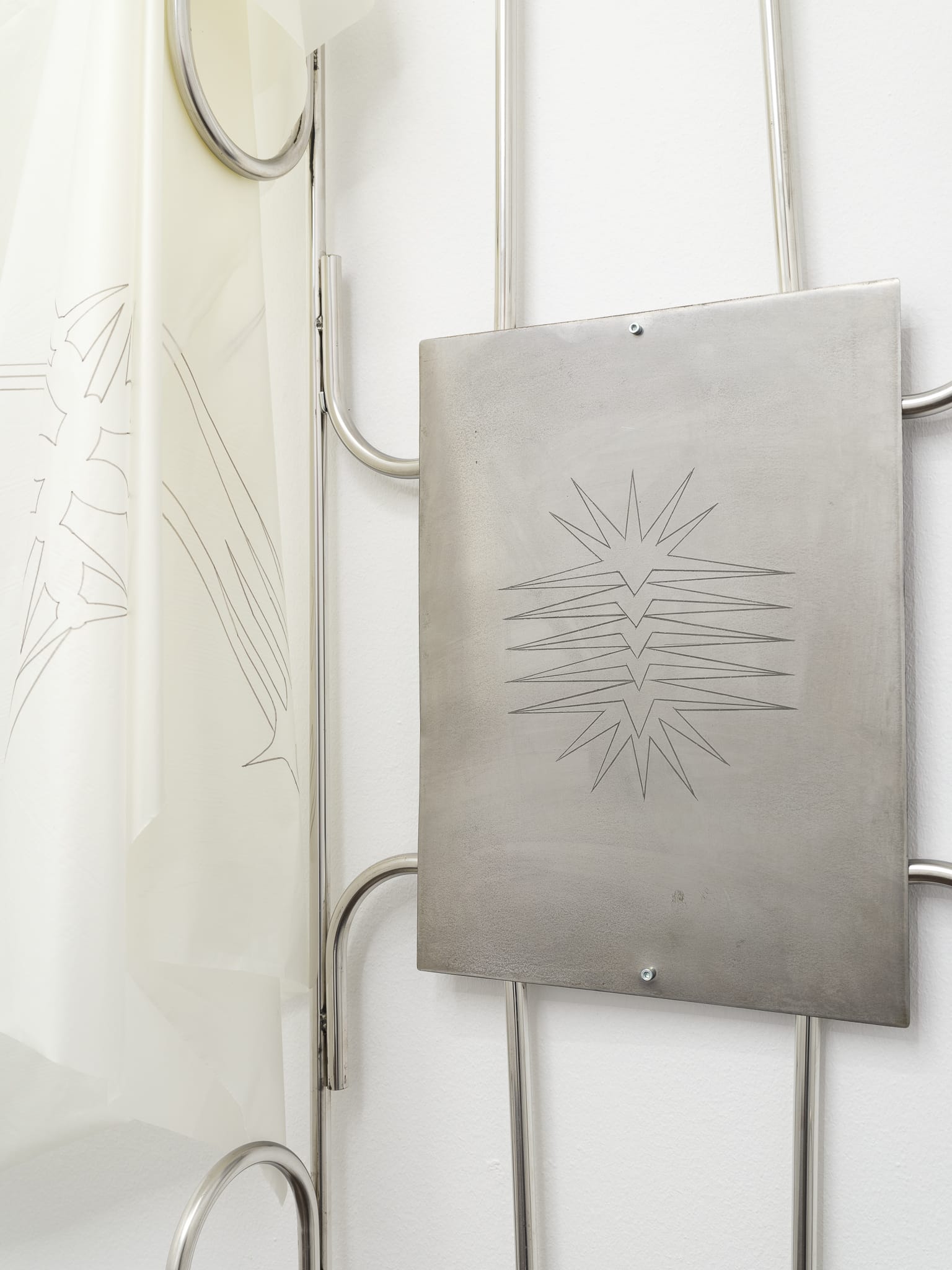
mirror drawing, engraving plate, stainless steel
170 x 80 cm
Artist
Giulia Crețulescu (b. 1994, Craiova) graduated from the National University of Art Bucharest. While studying graphics, she became interested in the representational phenomenon as a dynamic between consciousness and action and in how the two-dimensional image communicates in a system of three-dimensional objects, forming referential circuits on the human body. Her interdisciplinary approach is embodied in hybrid objects that aim at the deconstruction of the object until the dissolution of its identity in a foreign body, deprived of any immediate function, thus becoming purely disruptive entities that force their placement under a new identity. The interest for the liminal, trans-categorical character of an object is powered by the desire to place the artistic object under an uncertain status that approaches and forces the viewer to come up with a series of possible ontologies into which they develop. Her works have been exhibited in institutions, art spaces and art galleries such as The National Museum of Contemporary Art, The Museum of Recent Art, Cazul 101, Atelier 35, Ivan Gallery, Goodbuy Gallery, CAV Gallery in Bucharest; Matca artspace, Zina Gallery, and Aici Acolo Pop Up Gallery in Cluj-Napoca. Her works are part of the permanent collection of The National Museum of Contemporary Art in Bucharest.

